
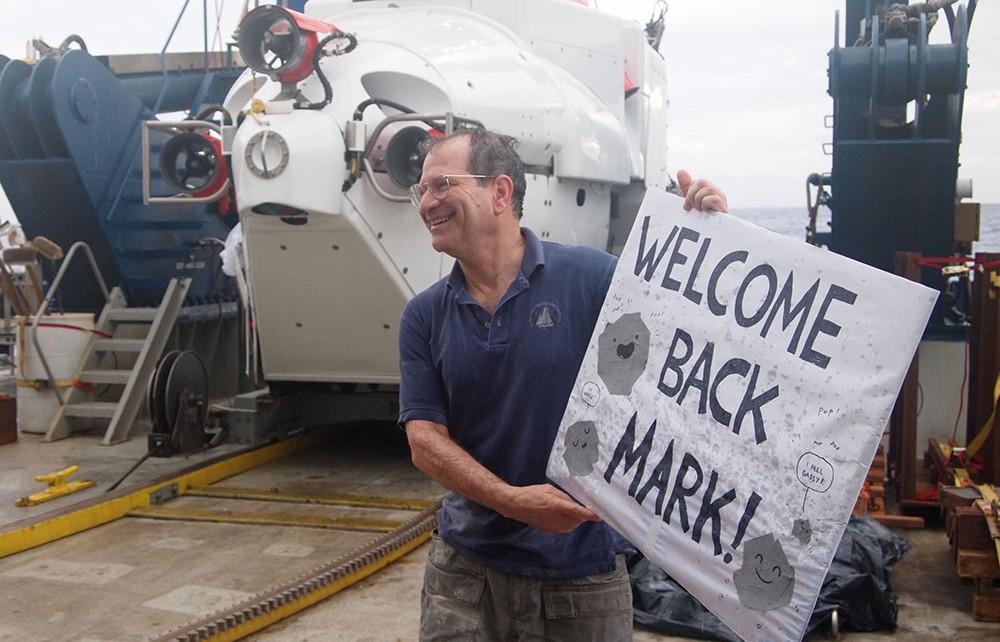
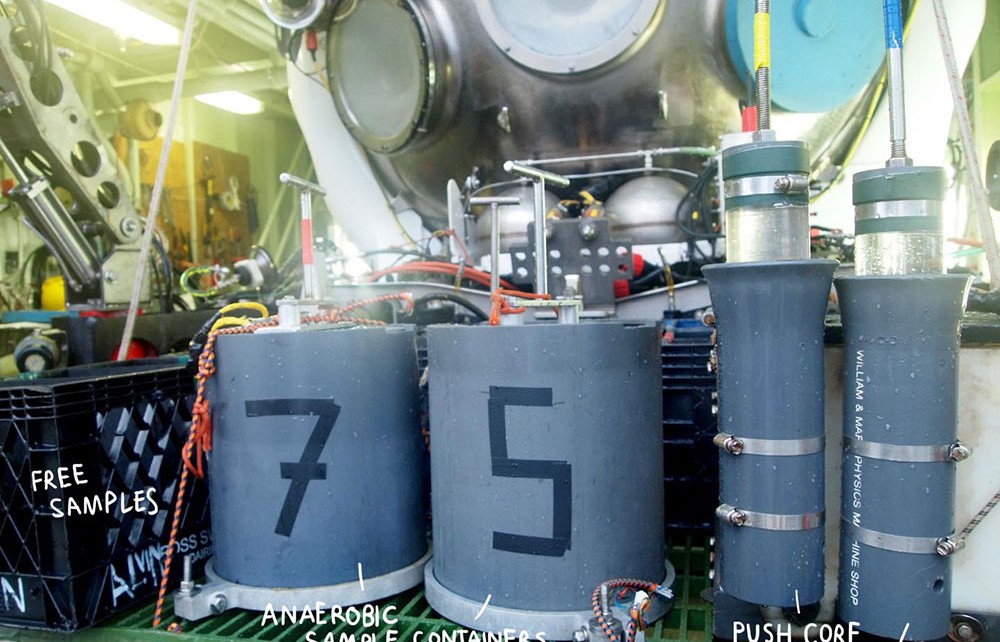
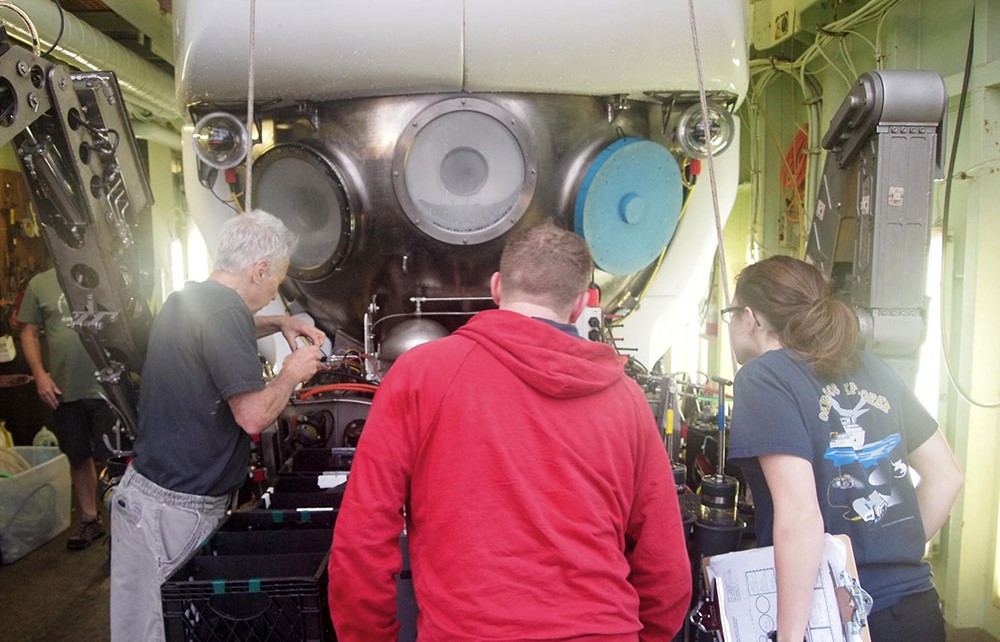
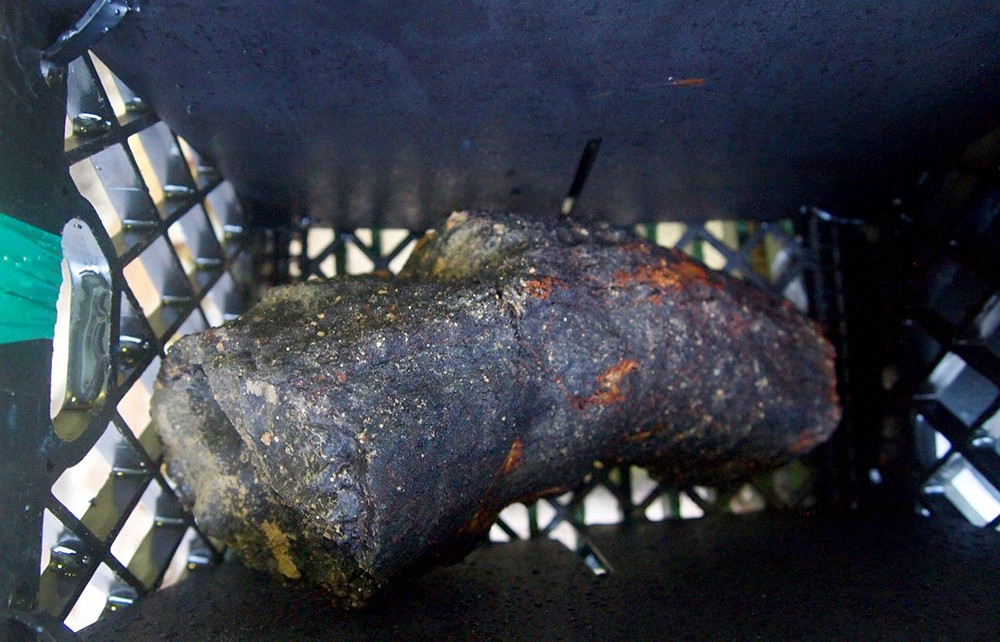
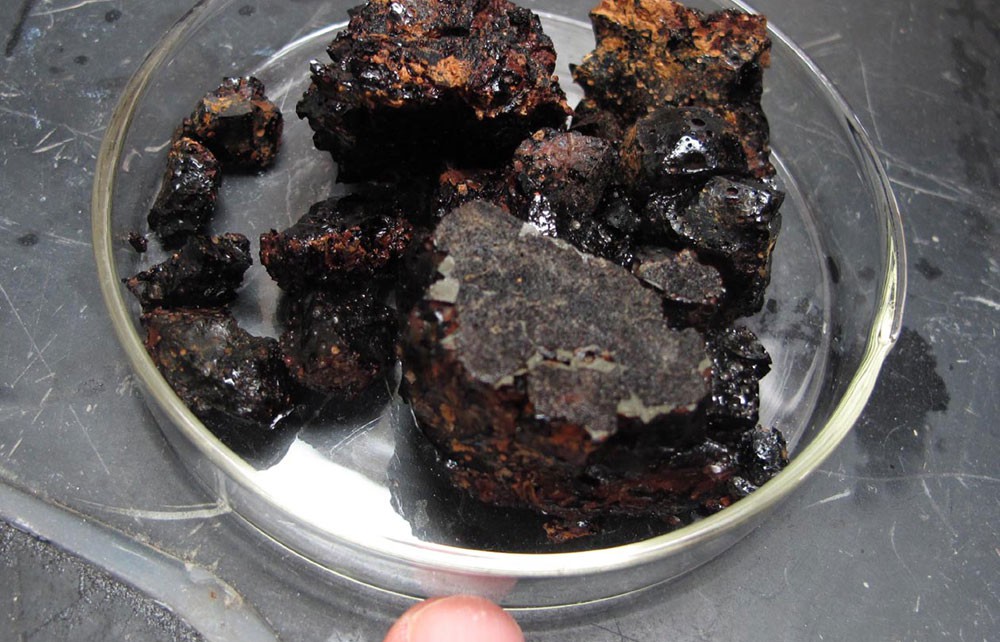
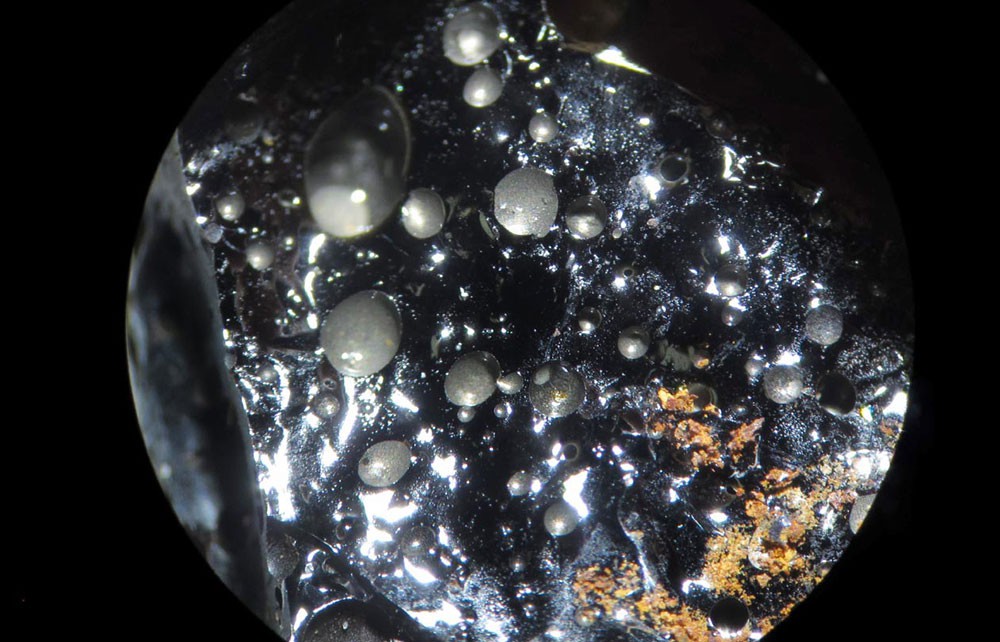
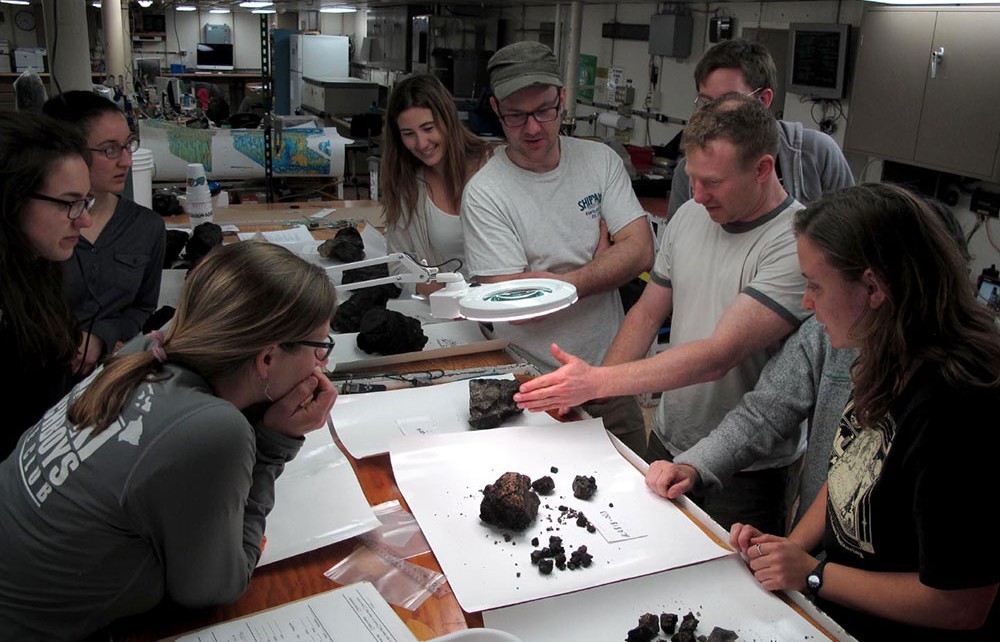
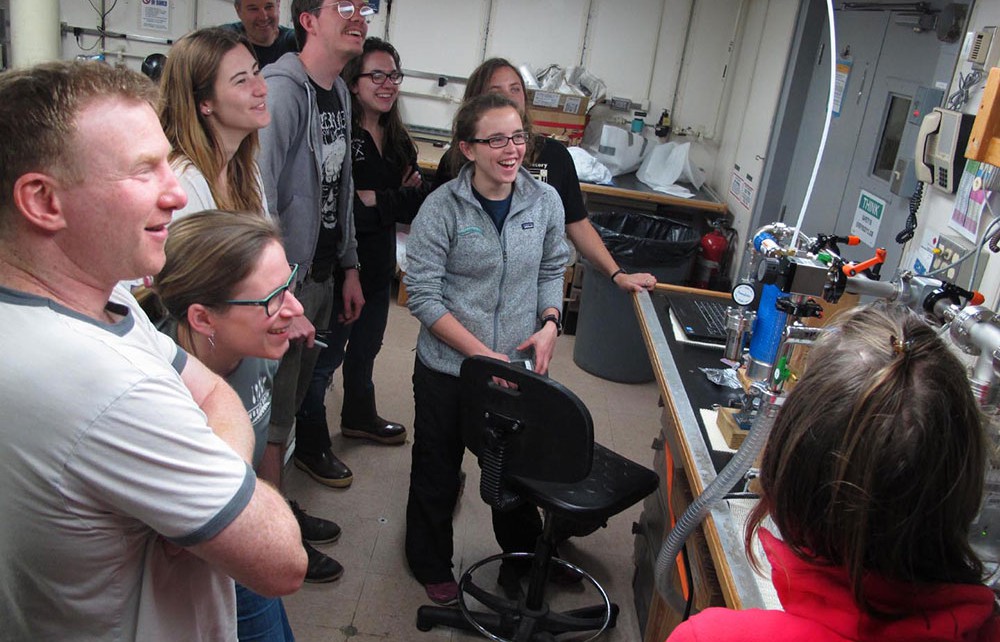
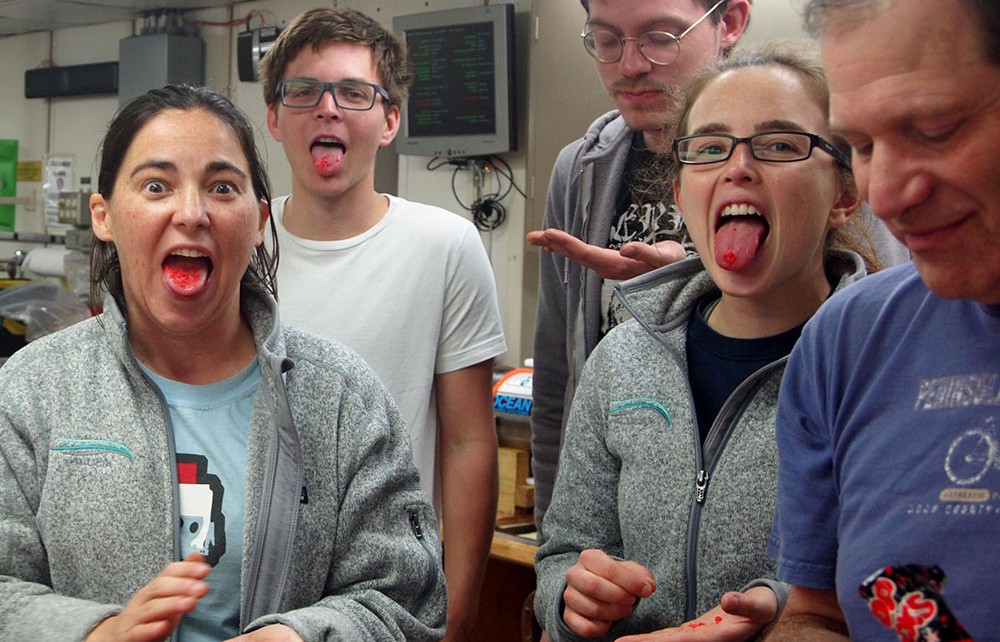
Well, it didn’t take long. Just a few hours after arriving on deck from our first Alvin dive, one of the glassy fragments of basalt went “POP!” right on the sample table.
Word spread throughout the ship and we promptly celebrated with Pop Rocks. And then everyone immediately went back to the samples to see if more “POPS” were happening (they were!). More soon.
Rock on,
The Popping Rocks Team



